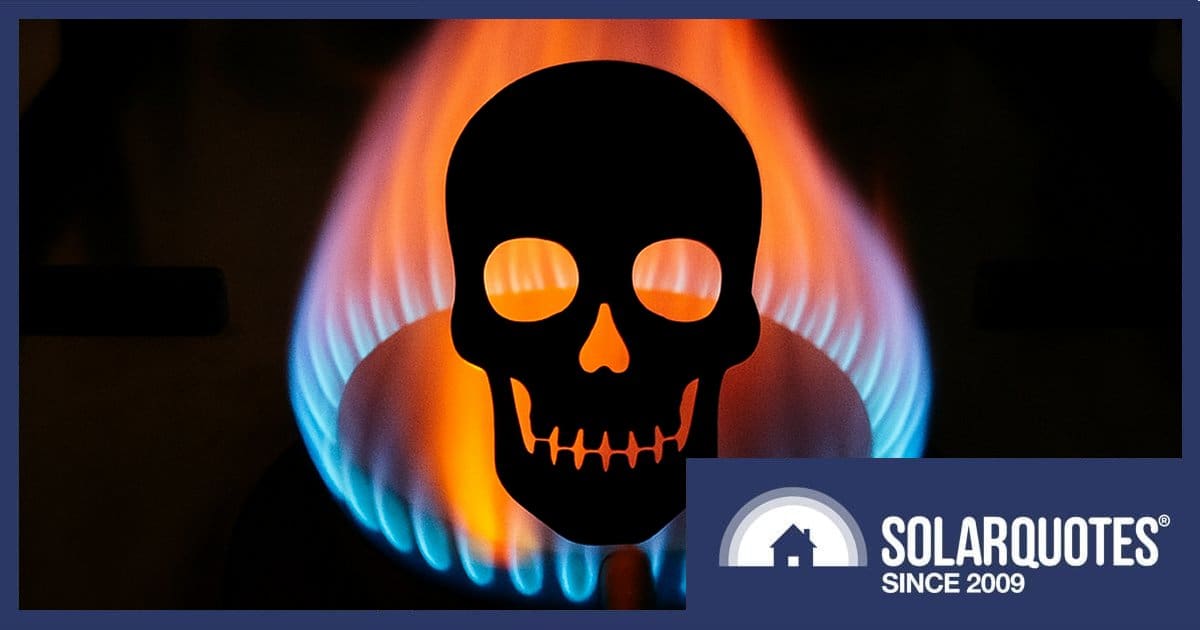

Still tossing up on getting rid of gas appliances in your home in favour of electrification? Here’s another compelling reason for making the switch, particularly if you have kids – you’ll be helping to protect their health.
This doesn’t mean just protecting their health from increasing impacts of climate change, which is driven by extracting and burning fossil fuels. It’s also not a “won’t somebody please think of the children” situation seized on by pearl-clutchers wanting to turn our kids into snowflakes.
Gas has a manufactured reputation as being a clean(er) fuel. But burning gas in the home for cooking releases toxic pollutants; among them:
- Nitrogen dioxide – a respiratory irritant. Causes respiratory diseases and aggravates asthma.
- Carbon monoxide – reduces the ability of blood to carry oxygen.
- Formaldehyde – carcinogen, irritation to the eyes, nose, and throat, and skin reaction.
- Benzene – carcinogen and eyes, skin and respiratory tract irritant.
Gas Benzene Emissions Elevate Cancer Risk
Benzene is a volatile organic compound classified as a Class 1 carcinogen by the International Agency for Research on Cancer (IARC). It also has many other health effects including causing fatigue, tremors, headaches, eye irritation and skin allergies. It’s pretty much odorless in small quantities, yet still dangerous. But if you smell a sweet odour similar to petrol, you’ve probably copped a mighty dose.
A study out of Stanford University in 2023 found gas stovetops and ovens produce “unsafe”1 levels of benzene. And the chemical migrated throughout homes, including into bedrooms; in some cases elevating concentrations of benzene above chronic health benchmarks for hours after the stove was used.
A more recent study to be released in the July issue of the Journal of Hazardous Materials arrived at the same sort of conclusions. This study’s results also indicate gas cooktop emissions significantly elevate cancer risks in homes with medium to high stove usage and inadequate ventilation.
The threat to kids noted was particularly troubling – the cumulative Incremental Lifetime Cancer Risks (ILTCR) for children was 1.85 times higher than for adults in most of the high and medium gas stove usage scenarios.
“Children exhibit higher inhalation rates relative to their body weight, lower overall body weight, and distinct physiological characteristics, making them more vulnerable than adults to carcinogenic risks associated with exposure to pollutants,” states the study.
Vented Hoods Help, But …
Ventilation mitigated benzene risks, with vented hoods that provide more than 75 % capture efficiency notably reducing benzene exposure in kitchens. The problem is many standard rangehoods don’t appear to have a capture efficiency anywhere near this figure (particularly on front burner use) and for ones that do, the models I looked at cost thousands of dollars to purchase and install.
We had a new rangehood fitted a few years ago that is flued to the outside. It’s disturbing how many I’ve seen aren’t – they just pump everything into the roof space, which also creates a fire risk from grease buildup. But I strongly doubt ours has anywhere near 75 % capture efficiency judging by the strong cooking smells that still waft around the house.
Protecting Kid’s Health – And Saving Money
The benzene issue is another case of prevention being better than cure, and the prevention is switching from gas to electric. For cooking, the Victorian Government says electric induction cooktops are around 3 times more efficient than gas cooktops – induction models heat with more precision, cook quicker and provide greater temperature control.
Switching from gas to an all-electric home can save hundreds of dollars a year on energy bills, with savings further boosted if you’ve installed a solar power system and even more if you also have a home battery.
“There are currently over 5 million Australian homes with gas connections,” says SolarQuotes’ Ronald Brakels. “The number that would be financially better off if they stopped using gas is, by my calculations, over 5 million.”
Ronald also recently debunked a claim that Australians would struggle to feed themselves or heat their homes without gas.
One of the barriers that discourages Australians from ditching their gas appliances is of course cost, but there are home electrification subsidies and incentives available in some states/territories to help make the switch.
Ronald also recently explained the difference between disconnecting gas and abolishing it; and how to avoid what can be huge fees to have your gas connection removed forever.
Footnotes
- The World Health Organization (WHO) states there is no safe benzene limit according to this factsheet. That document doesn’t mention gas stovetops/ovens, but was published in 2019 before more recent studies on benzene emissions associated with gas cooking were published. ↩






